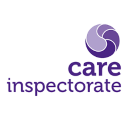Glossary

Agency worker: the Act defines an agency worker as being within the meaning of the Agency Workers Regulations 2010. Any staff directly employed by the relevant organisation are not included within this meaning.
Care Inspectorate: the Care Inspectorate is the independent national scrutiny and assurance body responsible for the registration and regulation of care services in Scotland. We scrutinise and inspect services to ensure they meet high standards. Where the need for improvement is identified, they support services to make positive changes. We are referred to in the HCSA as Social Care and Social Work Improvement Scotland.
Care service providers: those providing a care service listed in section 47(1) of the Public Services Reform (Scotland) Act 2010.
Staffing Method: sets out a process for determining staffing, involving the use of speciality-specific staffing level and professional judgement, consideration of quality measures, and a range of other factors, such as the local context, patient needs and appropriate clinical advice. From this, risks are identified, and steps taken to mitigate them, and the organisation determines whether it needs to make any changes to the staffing establishment.
Earn and Learn model: a model of employment where individuals are able to combine work and study.
Health and Social Care Standards: standards setting out what people should expect when using health, social care, or social work services in Scotland.
Multi-disciplinary services: the Act defines these as “health care or care services delivered together by individuals from a range of professional disciplines as necessary in order to meet the needs of and improve standards and outcomes for people who use services.
Professional disciplines: the different types of health care / care professions, for example nursing, psychology, dentistry, physiotherapy etc.
Professional Judgement: managers and staff use professional judgment to make decisions every day. They may share problems with a colleague who have more experience and knowledge. Refer to professional codes of practice and put safety first for those they care for and colleagues. Base decisions on evidence and consider the needs, wishes and preferences of those affected by their decisions. It is important to record the decision based on the key factors.
Registered nurse: a nurse included on the register of members maintained by the Nursing and Midwifery Council under section 60 of the Health Act 1999.
Scottish Social Services Council: the national regulator for the social work, social care and children and young people workforce, and lead for workforce development and planning for social services in Scotland, with responsibility for: publishing national codes of practice for those working in social services and their employers; registering those working in social services and ensuring they adhere to the codes of practice; promotion and regulation of the learning and development of the social service workforce; and providing official statistics for the sector.
Secondary legislation: secondary legislation is a term for law made under an Act of Parliament or Act of the Scottish Parliament (primary legislation), for example regulations or an order. Secondary legislation can be used to implement the detailed policy behind primary legislation. Secondary legislation could also be referred to as subordinate legislation, Statutory Instruments (SIs) Scottish Statutory Instruments (SSIs) or delegated legislation.
Service delivery models: a model used to deliver a health care or care service; the way in which a health care or care service is delivered.
Social Care and Social Work Improvement Scotland: see Care Inspectorate.
Staffing levels: the number of staff.
Staffing level tool: a staffing level tool is designed to provide quantitative information relating to workload, based on patient needs, in order to assist in determining the appropriate staffing levels for a particular kind of health care provision. A staffing level tool requires individuals to input certain information about the location in which it is being used, such as a ward or a community service. The tool then outputs quantitative information about staffing, to assist in determining appropriate staffing levels.
Supernumerary: staff that are not counted as a part of the staffing required for safe and effective care in that setting, often because they are students.
